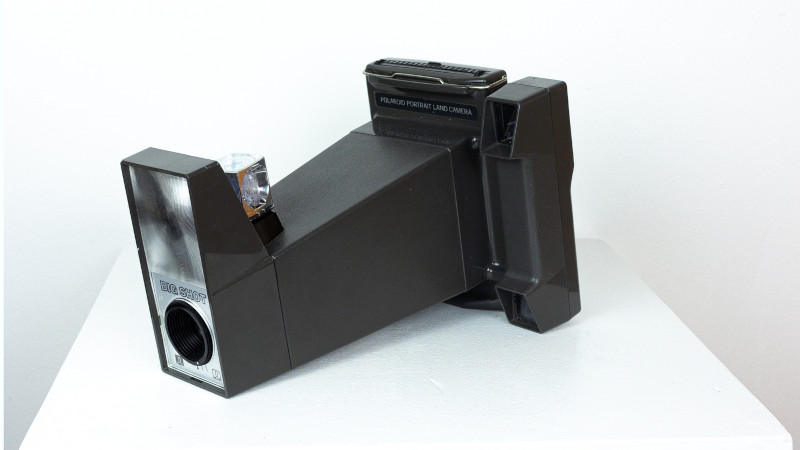Browsing the thrift stores will net an amazing array of old cameras for dirt cheap prices, meaning that a film enthusiast can have plenty of fun without wasting money they could spend on the film itself. Unfortunately many of the more interesting cameras are those which use film long out of production, leaving the photographer with a need to improvise using a more modern film that’s still in production.
[Nicholas Morganti] has just such a camera, a Polaroid Big Shot, a 1970s instant camera designed for portrait work, for which the Polaroid 100 film packs are sadly a distant memory. Leave it on the shelf? Not likely, he’s adapted it to work with Fuji Instax 210, a readily available and cheap instant film.
Polaroid 100 and Instax 210 are almost the same size, but are not close enough for a direct fit. An Instax cartridge can be persuaded to fit into the Big Shot, but it’s a tight fit that puts strain on the aged Polaroid hinges. Even then the Polaroid rollers and photo ejection system are very different from those in the Fuji, so it involved a workflow in which the cartridge had to be unloaded in a darkroom between shots and processed through a real Fuji camera for the final picture.
His eventual solution takes a less camera-straining tack, still requiring a darkroom but taking an individual unexposed frame from an Instax pack and placing it in the Big Shot on an adapter plate. The result is a usable if a little cumbersome workflow for vintage Polaroid pictures, something plenty of instant photography enthusiasts will be thankful for. If you’re one of them, you might like to read our look at the process.
















As a kid, when I saw one of those in a drug-store, I wanted one!
Edward Land: https://en.wikipedia.org/wiki/Edwin_H._Land
The Big Shot was one of Andy Warhol’s favorite camera. “He used it to capture iconic photos of John Lennon, Diana Ross, Mick Jagger, Blondie, Jean-Michael Basquiat and countless other creatives during the 1970s and 1980s. The Big Shot became such an important part of Warhol’s work that he once called it his “pen and pencil.” ” ( https://retrospekt.com/products/polaroid-big-shot-packfilm-camera ). The Impossible Project which remade iconic Polaroid film is now called Polaroid Original (I hear). However, the film prices are a bit high. Great hack for keeping an old icon going !
It’s now just ‘Polaroid’.
The new Polaroid film is only ‘integral’ film (fully self contained negative + positive + developer), whereas the ‘big shot’ and similar cameras used peelapart ‘packfilm’ (separate negative and positive, negative could be retained for separate printing at higher quality than the instant positive). The Impossible Project / Polaroid never recreated packfilm.
Another company, One Instant, are current manufacturing a packfilm replacement, but instead of containing multiple shocks in a pack, each pack is single-shot only, and QC is still a work in progress.
Prior to packfilm, there was also Polaroid ‘roll film’, which nobody has attempted to recreate.
Looks like these would have been a hit with law enforcement processing back in the day.
Mugshots/passports used specialised large-format-derived cameras, with multiple lenses mounted (usually 4) and 4×5 peelapart instant film. Each shutter press would fire off a different lens and illuminate 1/4 of the final image, so after 4 shots (from 4 different directions) a single image would be produced with those 4 different views. The passport variant fired simultaneously, for 4 copies of the same photo (from an inconsequentially slightly different angle) and could then be cut apart for 4 passport sized photos.
I keep one Polaroid 600
https://th.bing.com/th/id/OIP.rOsjp2WEmnvXm90ScQNd9wHaHa?pid=ImgDet&rs=1
I had a Big Shot in the 70s. It was a cool camera! Took great portraits.
It’s shooting “Instax Wide” film, Instax 210 is a camera model not a film type. I don’t know why he wrote it that way in the article.